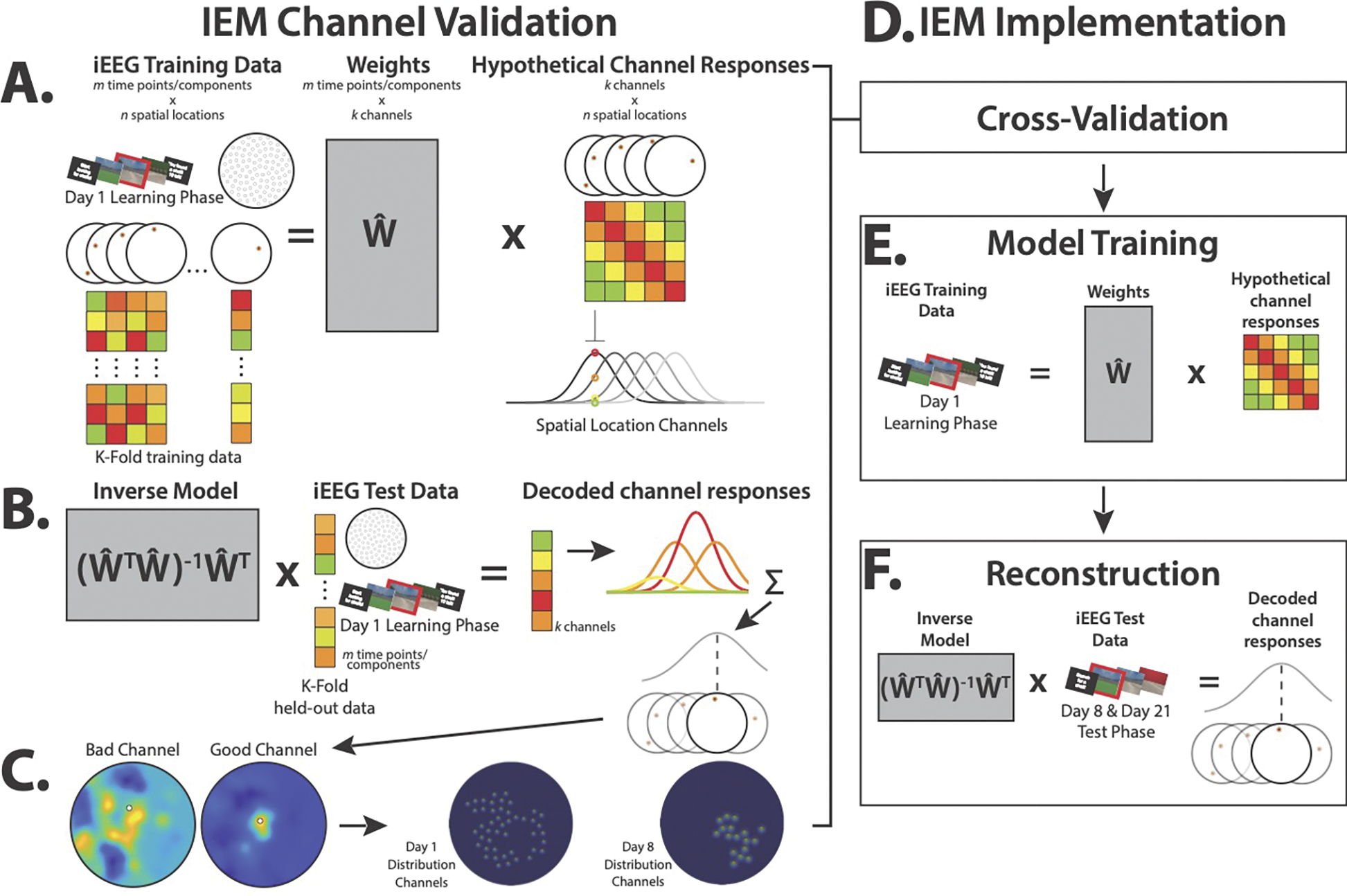Fig. 4.

Model channel validation and implementation. Models were optimized via a channel validation step prior to implementation on the test phases of the task on Day 8 and Day 21. A.) Model architecture assumes the neural response at a given spatial location (illustrated by the color matrices below each schematic location in the water maze) is the sum of weighted hypothetical channel responses, where the channels are Gaussians that span the maze. To determine which channels contributed significantly to reconstruction, per encoding Day (1 or 8), a subset of data from within each channel radius was iteratively held out, and the model was trained on remaining data. B) The inverse model was tested on the subset, producing a sum of channel responses, the peak of which was the reconstructed location within the maze. C.) Good channels, for which this summed activity was significantly proximal to the channel’s location in the environment, were left in the model, resulting in 46 good channels for Day 1 and 17 good channels for Day 8. D) Channel validation was the first step of model implementation, resulting in separate optimized models for Day 1 and 8. E) Optimized models were then trained on all encoding data from their respective encoding days. F) The inverse optimized, trained models were then applied to the pre-navigation periods on test Days 8 and 21 to reconstruct the patient’s spatial representations at test.
